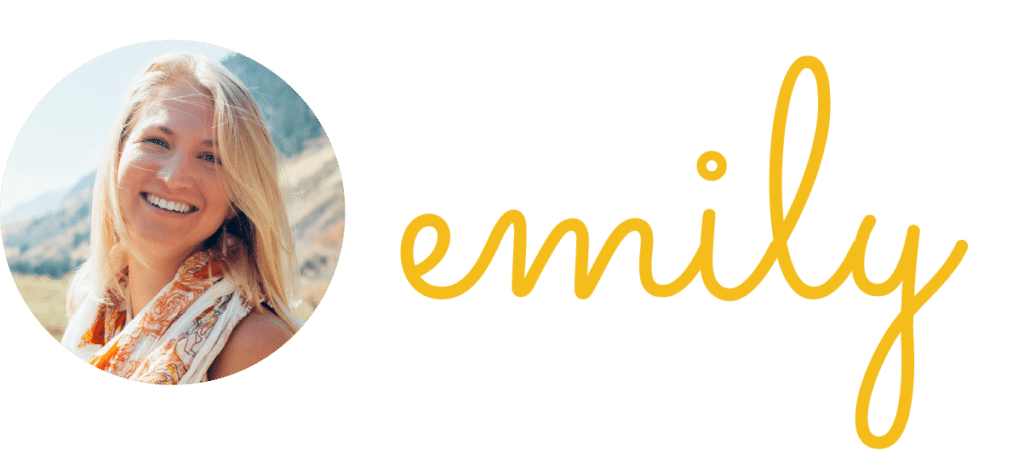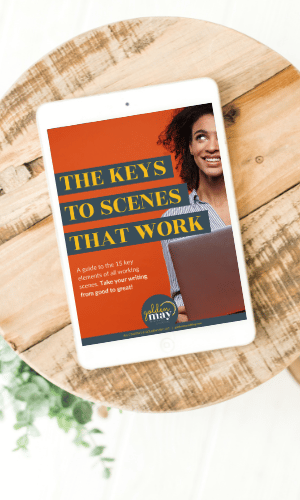It’s so fun to start a new story. You’re in the honeymoon phase, crafting characters that make your heart twinge and throwing challenges their way to make them squirm. You’re exploring new worlds, casts and themes. It’s exhilarating—until you hit that inevitable 20-25% mark. Suddenly it’s time to launch into Act Two and you’re paralyzed.
There’s a reason so many writers lose their way and motivation in Act Two. Maybe you have an ending for your story in mind, maybe you don’t, but there’s a huge and daunting expanse of 50-60% of your story to fill before you get there.
The good news is that there is a formula you can follow to for Act Two that’s useful without being prescriptive—and today we’re going to break it down for you!
Act Two is When Your Character Changes
Stories are about how a character changes. In a three act structure (for a heroic, or positive story), your main character opens the story as one version of themselves, is changed by their journey, and ends as a new and improved person.
Act Two is when your character is changing. It’s the meat of the book that takes us from who they are and what they believe in Act One (what we call their Internal Obstacle belief) and transforms them into who they are and what they believe in Act Three (what we call the Story Point).
STORY POINT
Your Story Point is the core of your story, the message you want readers to take away from your book. It’s the thing that your character (and reader!) needs to learn.
EXAMPLE: The story point of The Hunger Games by Suzanne Collins, is that “There are goals more worthy and important than simply surviving.” As Katniss learns this, the reader does too.
INTERNAL OBSTACLE
A character’s Internal Obstacle is a lie, fear, or false belief they have about how the world works that they need to overcome in order to succeed.
EXAMPLE: In The Hunger Games, Katniss’s internal obstacle is that she believes “Survival, of self and family, is the only reasonable goal.” She has to unlearn this in order to learn the story point.
Solving Things the Wrong Way
When your character enters Act Two, they’re stepping into action, actively addressing their problems, but their Internal Obstacle is firmly in place and it leads them to enter Act Two tackling their problems in the wrong way. The meat of Act Two, therefore, is your character constantly trying and failing to achieve their goals, pivoting their tactics as the fail again and again to overcome their Internal Obstacle. It’s not until the very end that they unlearn it, allowing them to enter Act Three learning and/or proving the Story Point.
EXAMPLE: In The Hunger Games, Katniss opens Act Two firmly believing that her sole purpose and goal is to survive the games and get home to protect her sister. Because of her internal obstacle, she thinks the best way to do this is to train hard, work alone, and do whatever it takes to win the games. This will end up proving the wrong plan, because she can’t survive (and realizes it’s not worth surviving) without the friendship and support of others. Ultimately, she breaks into Act Three understanding the Story Point and determined to save her friend Peeta to spite the Capitol’s horrid treatment of them.
The Structure of the Middle Act
We’ve established that Act Two is all about change and we understand who your character needs to be at the opening and ending of the act… but how do you get them there?! That’s the real question we’re breaking down today—the structure of the middle act.
Act Two contains plot events that constantly challenge your character’s Internal Obstacle and force them to continually shift tactics—ultimately shoving them to the deep depths of failure so they’re finally forced to change.
Let’s look at the key beats in Act Two using the structure outlined in Jessica Brody’s brilliant Save the Cat! Writes a Novel (Here’s a link to it! It’s an affiliate link, so we may earn commission on any purchases made). We’ll track Katniss’s journey in The Hunger Games to prove how it all works.

BREAK INTO ACT 2
In Act One, you established your character’s motivations and Internal Obstacle, then you threw an inciting incident plot challenge their way. By 20% into the story they need to choose to act in the face of that challenge. But, as we discussed above, because of their Internal Obstacle they will act in the wrong way.
EXAMPLE: By this point in The Hunger Games, Katniss has volunteered as a Tribute in the Hunger Games (a televised competition where children kill one another until there’s one left standing) to save her sister. Katniss and the other Tribute from her District, Peeta, are swept away to the nation’s Capitol. She arrives at the Capitol and is horrified—these people indulge while her community suffers!—but she is too focused on her goal of surviving and protecting her sister to believe she can or should do anything about it.
FIRST PLAN OF ATTACK—A.K.A Fun and Games Beat!
The first half of Act Two contains your character attempting their initial plan of attack against their problems. As the plot throws continual challenges in their way, they keep failing because of their Internal Obstacle.
EXAMPLE: Katniss’s first plan is to avoid getting attached to any Tributes (since she’ll have to kill them) and focus on surviving the Games. She ignores the inequities she encounters, and her growing feelings for Peeta, to throw herself into training to win sponsors. When the Hunger Games begin she sets out on her own. When she sees Peeta join up with the worst of the Tributes, she decides their affections were never real. She assumes his goal is also to survive and he’d kill her just as soon as she’d kill him. (NOTE: Peeta is her B Story, per the Save the Cat! structure). Determined to survive by killing / outliving the rest of the Tributes, Katniss continues working on her own, but she experiences setback after setback, from dehydration to Tracker Jacker attacks.
MIDPOINT
This is a major moment for your character, something occurs in the plot that ups the stakes and forces them to admit that their current plan (the one they established in the act’s opening) simply isn’t working. They shift tactics, but of course it’s still the wrong plan because they’ve not yet unlearned their Internal Obstacle
EXAMPLE: Katniss’s Midpoint occurs when Peeta unexpectedly saves her life. Hurt and hallucinating, Katniss realizes that Peeta does care about her—except it doesn’t matter, because only one of them can live. Katniss shifts tactics by deciding that her best chance of survival is to join forces with other Tributes as well, a step in the right direction, but because she hasn’t learned that there is more to life than simply surviving, her goal is still to survive alone in the end.
SECOND PLAN OF ATTACK—A.K.A. Bad Guys Close In Beat!
After the Midpoint shift in tactics, the character sets out to implement their new plan. Except they still haven’t learned the story’s point, so their plan is still flawed. As they move forward, the plot keeps throwing challenges their way that they’re still not equipped to address. The consequences of all their flawed decisions start to catch up.
EXAMPLE: Katniss joins forces with Rue, another Tribute who reminds her of her sister. They experience success against the strongest Tributes as they learn news that weaker and less fortunate tributes have died—putting them closer to success. But then Katniss learns that Peeta is hurt and dying somewhere in the arena. Objectively this means one less person to kill, but truthfully it reminds Katniss that she owes him for saving her, and that she could have helped him.
ALL IS LOST / DARK NIGHT OF THE SOUL DEBATE
This is the darkest moment of the story, the moment when something horrible happens in the plot—and it’s your character’s fault. They’re fully or partially responsible because of their Internal Obstacle. In the last beats of Act Three, they face the fact that they messed up in the Dark Night of the Soul beat, and in doing so they’re forced to admit the errors of their ways. The only way forward is to ditch their Internal Obstacle and learn the Story Point.
EXAMPLE: Katniss and Rue launch an attack against the other Tributes, but in the chaos they get separated overnight. Katniss waits for Rue at their rendezvous point for a long time, but she doesn’t go looking for the girl immediately because she’s focused on her own survival. Because of this hesitation she is too late. She arrives just as Rue is killed by another Tribute. This moment hurts Katniss deeply because she’d grown affections for Rue despite herself and because of her internal obstacle, she wasn’t there to protect the girl. Instead of running to hide and work on surviving, Katniss takes time to prepare a tribute to Rue that is guaranteed to humanize her and make a statement on television. By the time she’s finished, she’s learned that there’s more to life than merely surviving.
BREAK INTO ACT 3
After your character’s wake up call, they form one last plan to succeed. But this time, they’ve unlearned their Internal Obstacle and learned the Story Point—so it’s the right plan. This is the plan that will carry them through Act Three as the new person they’ve become.
EXAMPLE: After Rue’s death, the Capitol announces two people can win the Hunger Games. Feeling guilty that she wasn’t there for Rue, Katniss makes the difficult choice to go find Peeta and save him alongside herself, even though that will be harder than surviving on her own. She’s learned that there are more important and worthy goals than simply surviving (the story point!). She’s become someone who, when the Capitol takes away the ‘two winners’ rule in Act Three, will decide to sacrifice herself to make a political statement rather than kill Peeta to win.
The SHAPE of Act Two
One more trick that Save the Cat! Writes a Novel offers is in the shape of Act Two. It’s a brilliant way of looking at Act Two to determine what kind of plot events to throw at your character and how well they should succeed. You have two options for that shape.

FALSE VICTORY SHAPE
In this shape, your character starts out Act Two—in the Fun and Games beat from the opening to the Midpoint—with a general upward path of successes. While the scene to scene moments vary in outcomes, the general path to the 50% mark is heading toward success (or so the character thinks). In this story shape, the Midpoint is a false victory: Your character reaches a point where they either *think* they’ve succeeded or are about to—but something doesn’t feel right. Maybe they’ve gotten what they thought they wanted, but not what they truly needed. Either way, they realize it’s not enough, they have to change tactics. After doing so, they experience a downward path of failures in the Bad Guys Close In beat.

FALSE DEFEAT SHAPE
This shape is the opposite of the False Victory Shape. In this set up, your character starts out Act Two—in the Fun and Games beat from the opening to the Midpoint—with a general downward path of failures. At the Midpoint they experience a false failure. Their plan is NOT working, so they’re forced to change tactics. From there, they experience an upward path of successes for the rest of Act Two, until plummeting to that dreaded rock bottom / All Is Lost moment.
EXAMPLE: In The Hunger Games, Katniss is in a False Defeat Shape. She starts out on a downward path, failing miserably in the Games because she’s stubbornly trying to succeed on her own, without growing close with any victors she’ll just have to kill. Her Midpoint is a false defeat because when Peeta saves her and proves he cares for her, she despairingly feels it’s pointless because one of them must die. But she also has realized she can’t survive on her own, so she joins forces with Rue (changing tactics!) and has an upward path of successes in the Games until Rue dies at the All Is Lost moment.
Act Two is the meat of your story, the heart of your character’s journey of change. It’s where you brilliantly deliver your story’s point by showing how your character’s flawed internal obstacle is holding them back. As the character changes, so will your readers. Embrace the structure and power of Act Two! Let us know in the comments below if you found this post helpful, we’d love to know.









Thank you for this! I took notes and even though I already had a Save the Cat beat sheet from the beginning of NaNo, this is much more detailed and makes it easier to see my story in this path. I think I definitely have a “false victory” story and reading this helped me see things more clearly for my plotting and revisions. I appreciate the Hunger Games examples but sometimes I wish I could find examples with more contemporary stories, I think the stakes are a little more hidden in those, and my story is contemporary. Even though I can see the stakes because I’m writing it so I know them, I wonder how well I am communicating them to my reader.
Hey Kaitlin! Thank you for your lovely comment! We’re so glad we were able to help you structure your Act Two. And yes, the stakes in contemporary can be a lot more nuanced or under the surface. Keep an eye on our pages, hopefully we’ll have some character/plot beat sheet breakdowns from those types of stories soon. In the meantime, the Save the Cat! website has some amazing breakdowns, you might be able to identify stakes in some contemporary stories there! https://savethecat.com/ Thanks for reading 🙂
[…] The middle of a book is often the hardest thing to write. Check out this article for some advice on how to handle […]
I hadn’t realized why I kept going back to “the honeymoon phase” of writing – I didn’t know that it existed, but more than that, I didn’t realize it was Act 2 that held me back every time! Maybe now I can stop rewriting Act 1 and move forward. Thank you!